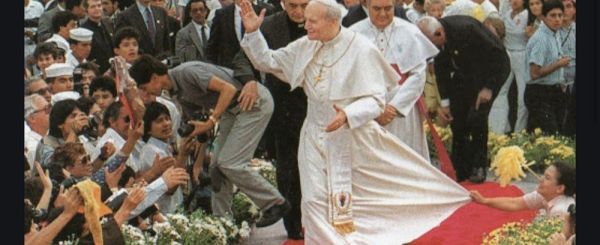In the liturgy of the word, Luke's Gospel presents us once again with Jesus' question: "Can a blind man guide a blind man?" (Lk 6:39). The Lord means that a guide cannot be blind; he must see well if he does not want to risk harming those entrusted to him. Jesus thus draws the attention of all those who have educational or leadership responsibilities: pastors of souls, rulers of peoples, legislators, teachers, parents, urging them to be aware, to feel responsibility, to ask themselves about the right path and to be the first to follow it themselves.
3. And the right path is the one traced by the divine Master. He said so himself with a Semitic expression that sounds like this: "The disciple is not above his master, but everyone who is well trained will be like his master" (Lk 6:40). With this, Jesus presents himself as a model and invites us to follow his conduct and his teachings. Only in this way can we be sure and wise guides. The Lord's teachings on moral life are contained mainly in the Sermon on the Mount, which we have been reading for the past three Sundays during the celebration of Holy Mass. In today's passage, we find another very significant phrase, which urges us not to be presumptuous and hypocritical. "Why do you look at the speck in your brother's eye and not notice the log in your own?" (Lk 6:41). How easy it is to see the faults and sins of others and not see our own! And how can we tell if our eye is clear or if it is impeded by a beam? The proof comes from our actions. It is Jesus himself who tells us: "Every tree is recognised by its fruit" (Lk 6:44). The fruit is our actions, but also our words. These too reveal the quality of the tree. In fact, those who are good bring out good from their hearts and mouths, and those who are evil bring out evil. This teaching of Jesus echoes the ancient words of wisdom from Sirach, which we heard in the first reading: 'The fruit shows how the tree is cultivated, so words reveal the feelings of a person' (Sir 27:6).
[Pope John Paul II, homily at Corviale, 1 March 1992]












